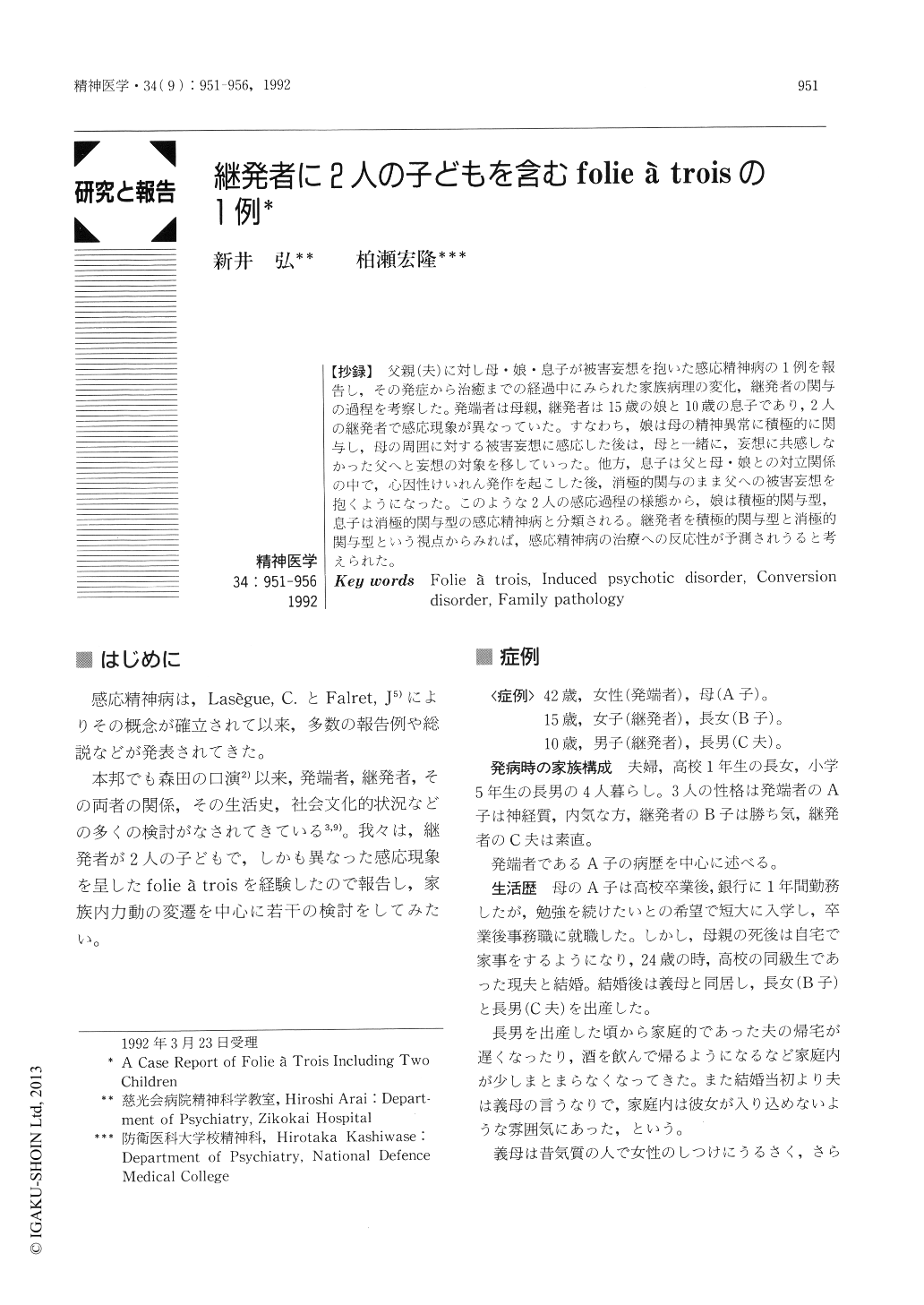3 0 0 0 OA COVID-19ワクチン接種後に薬物性肝障害を呈した1例
- 著者
- 清水 創一郎 佐藤 賢 伊藤 健太 喜多 碧 相原 幸祐 舘山 夢生 阿部 貴紘 柴崎 充彦 山崎 節生 深井 泰守 飯塚 賢一 滝澤 大地 新井 弘隆 井出 宗則 浦岡 俊夫
- 出版者
- 一般社団法人 日本肝臓学会
- 雑誌
- 肝臓 (ISSN:04514203)
- 巻号頁・発行日
- vol.63, no.12, pp.530-537, 2022-12-01 (Released:2022-12-12)
- 参考文献数
- 35
- 被引用文献数
- 1
COVID-19に対するワクチンが開発され,感染抑制や重症化防止に大きく貢献している.その一方で副反応も生じ,肝障害の報告も世界で散見されつつある.ワクチンによる肝障害のメカニズムは,自己免疫性機序などの報告があるものの,不明な点が多いのが現状である.今回,1回目のワクチン接種後に肝障害を来し,2回目のワクチン接種で更に肝障害が悪化し,ワクチンによる因果関係を強く疑い,ワクチンによる薬物性肝障害と診断した10代の女性の症例を経験した.本邦におけるCOVID-19に対するワクチンによる肝障害の報告はあるも,論文化された報告は1例もなく,貴重な症例と考えここに報告する.
1 0 0 0 OA 生体におけるマイクロ波及びラジオ波の凝固効果の検討
- 著者
- 大塚 敏之 高木 均 豊田 満夫 堀口 昇男 市川 武 佐藤 賢 高山 尚 大和田 進 徳峰 雅彦 堤 裕史 須納瀬 豊 新井 弘隆 下田 隆也 森 昌朋
- 出版者
- The Kitakanto Medical Society
- 雑誌
- 北関東医学 (ISSN:13432826)
- 巻号頁・発行日
- vol.50, no.6, pp.517-522, 2000-11-01 (Released:2009-10-15)
- 参考文献数
- 11
マイクロ波やラジオ波を用いた凝固療法は肝癌に対する局所療法として広く行われるようになってきた.今回, 我々はマイクロ波やラジオ波による凝固効果を, イヌ及びブタを全身麻酔下に開腹した後肝臓にそれぞれの電極針を穿刺し通電することにより検討した.イヌを用いた実験では, 肉眼的にAZWELL社製マイクロ波, RITA社製ラジオ波及びBOSTON社製ラジオ波で凝固範囲が異なった.組織学的には, いずれも辺縁部に直後では出血を, 5日後では肉芽組織の形成が認められ明らかな差はなかった.ブタを用いた実験では, RITA社製ラジオ波のみの解析であるが, 組織学的に通電直後と6時間後では辺縁部に出血が見られ, 7日後では辺縁部に肉芽組織の形成が認められた.また, 通電時間による凝固範囲内の組織学的所見には差がなかった.したがって, 生体において, マイクロ波とラジオ波ともに良好な凝固効果が得られると考えられた.
1 0 0 0 OA 真言声明における反音曲の記譜法について -四智梵語讃を中心に-
- 著者
- 新井 弘順
- 出版者
- The Society for Research in Asiatic Music (Toyo Ongaku Gakkai, TOG)
- 雑誌
- 東洋音楽研究 (ISSN:00393851)
- 巻号頁・発行日
- vol.1983, no.48, pp.42-90,L2, 1983-09-30 (Released:2010-02-25)
The shomyo of the Shingon sect is divided into four classes according to modal usage:1. Rokyoku (pieces in the ryo mode)2. Rikkyoku (pieces in the ritsu mode)3. Hanryo-hanrikkyoku (pieces half ryo and half ritsu)4. HennonkyokuThe first three classes are distinctions based simply on modal usage, but pieces of the fourth class employ modulations of mode. Pieces of this class begin in one mode, be it ryo or ritsu, and change to the other mode, and finish after modulating back to the original mode. They are most common in the san (hymn) repertoire (comprising Sanscrit hymns [bongo no san] and Chinese hymns [kango no san], which have texts set in verses of four phrases) of which the Shichi bongo no san (“Sanscrit hymn of the Four Wisdoms”) is a representative example.The basic notation manual of Shingon shomyo (which includes the Nanzan shinryu, Shingi-ha chizan shomyo and Shingi-ha buzan shomyo styles) which has been transmitted until the present day, is based on the Gyosan taigai-shu (also called Gyosan shisho or more simply Gyosan-shu, compiled by Joe in 1496, revised in 1514 and printed in 1646) which is written in the goin-bakase (five-note notation) developed by Kakui in the 1270s (see photograph 1). In addition to this notation, referred to as hon-bakase or basic notation, each school uses its own supplementary system which transliterates and facilitates the reading of the original notation, and which is variously called kari-bakase or tsukuri-bakase (makeshift or fabricated notation). The tuning of each piece in the repertoire is based on the practice of the Shomyo ryakuju-mon of Ryuzen (1258-?). According to this source, the Shichi bongo no san is a hennonkyoku in ryo-ichikotsucho (ryo mode on D) or ryo-sojo (ryo mode on G). Beginning on sho or the second degree (i. e. E) of ryo-ichikotsucho, the piece modulates twice at intermediate points to ritsu-banshikicho (ritsu mode on B), and ends on the second degree (E) of ryo-ichikotsucho.The scale of Shingon shomyo is based fundamentally on the goin (five-note) scale structure (note names in ascending order kyu, sho, kaku, chi, u), and the special characteristics of each note in the scale depend on the mode of the piece (i. e. whether it is ritsu or ryo). A characteristic melodic ornamental figure called yu (or yuri), for instance, occurs on the kyu scale degree in ryo, and the chi scale degree in both ritsu and ryo. Pieces in the ryo mode characteristically begin and end on the kyu or chi degrees of the scale, while ritsu pieces begin and end on the sho or u degrees of the scale. However, the Shichi bongo no san appears to be an exception to this rule, since notwithstanding the fact that the piece begins and ends in a ryo mode (ryo-ichikotsucho), its initial and final notes are both the sho degree of the scale. In addition, the ornamental figure yu (yuri) is also found on the same degree of the scale, thus contradicting the usual practices of pieces in ryo modes. This contradiction is not only characteristic of this single piece, but can be seen in other pieces in the hennonkyoku group.Dr. Kindaichi Haruhiko has in his article “Shingon shomyo” (“Buddhist ritual chant of the Shingon sect”, Bukkyo Ongaku, Toyo Ongaku Sensho Vol. VI, 1972) attempted to explain the reason for the occurrence of these unusual features of the pieces in the hennonkyoku group. According to Kindaichi, the shomyo of the Nanzan shinryu school
1 0 0 0 継発者に2人の子どもを含むfolie à troisの1例
【抄録】 父親(夫)に対し母・娘・息子が被害妄想を抱いた感応精神病の1例を報告し,その発症から治癒までの経過中にみられた家族病理の変化,継発者の関与の過程を考察した。発端者は母親,継発者は15歳の娘と10歳の息子であり,2人の継発者で感応現象が異なっていた。すなわち,娘は母の精神異常に積極的に関与し,母の周囲に対する被害妄想に感応した後は,母と一緒に,妄想に共感しなかった父へと妄想の対象を移していった。他方,息子は父と母・娘との対立関係の中で,心因性けいれん発作を起こした後,消極的関与のまま父への被害妄想を抱くようになった。このような2人の感応過程の様態から,娘は積極的関与型,息子は消極的関与型の感応精神病と分類される。継発者を積極的関与型と消極的関与型という視点からみれば,感応精神病の治療への反応性が予測されうると考えられた。
- 著者
- 新井 弘順
- 出版者
- 智山勧学会
- 雑誌
- 智山学報 (ISSN:02865661)
- 巻号頁・発行日
- vol.42, pp.187-216, 1993
